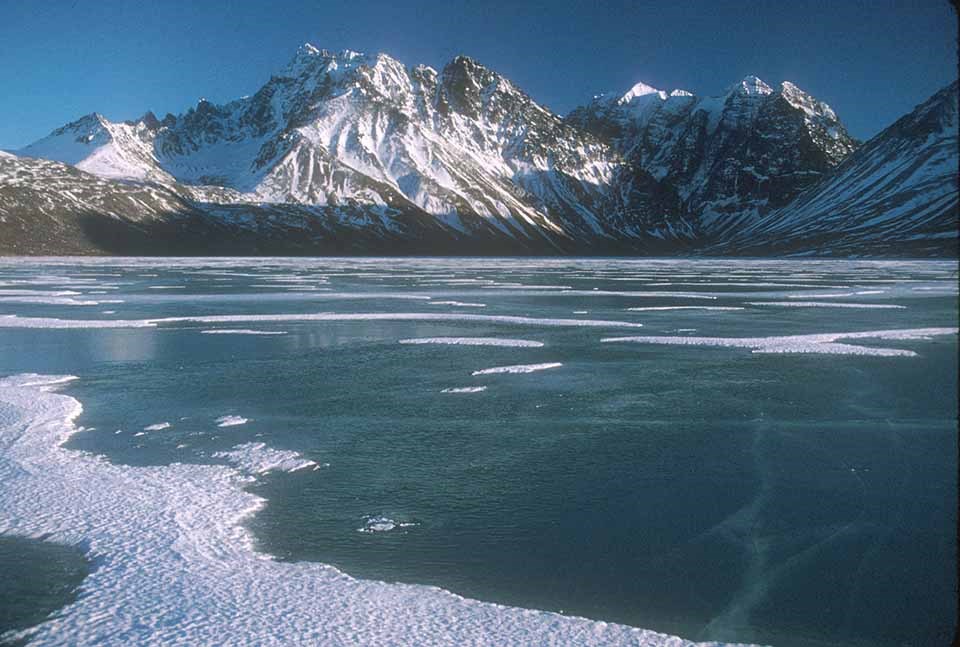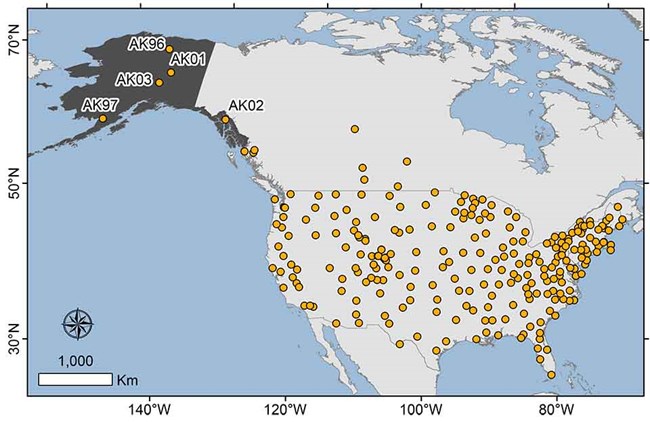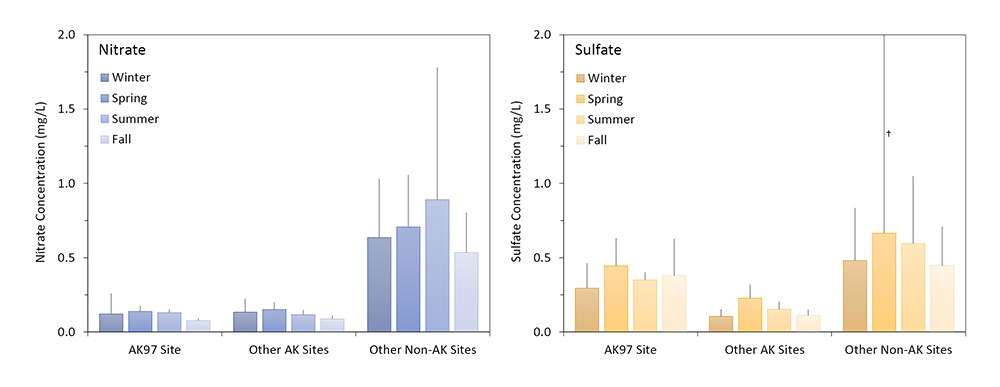Last updated: April 13, 2020
Article
Air Quality in Southwest Alaska

As a result, the condition of sulfur deposition in the park has been reduced to “fair,” although some of the sulfur might be naturally derived from sea salt (Polissar et al. 1998).
Atmospheric deposition is the process by which airborne pollutants reach the earth’s surface. This occurs either through wet deposition from rain, snow, sleet, and fog, or through dry deposition of particles during periods without precipitation. Deposition can include a wide variety of natural and synthetic pollutants, such as inorganic elements (e.g., sulfur, nitrogen, mercury) and both inorganic and organic compounds (e.g., sulfate, nitrate, pesticides). Once deposited, pollutants can have a range of ecological effects. Nitrogen and sulfur compounds, for example, can result in acidification of terrestrial and aquatic habitats; eutrophication of freshwater, estuarine, and marine waterways; and loss of biodiversity. Arctic and subarctic ecosystems are particularly vulnerable to impacts from the deposition of excess nitrogen and sulfur. Therefore, while the amounts of nitrogen and sulfur reaching high-latitude parklands may be small, they may have disproportionately large effects.

Findings
Wet deposition has been monitored in North America since 1978 by the National Atmospheric Deposition Program’s National Trends Network (NTN). This network currently includes 259 active monitoring sites, one of which is operated by the Southwest Alaska Network (SWAN) and Katmai National Park and Preserve. This site (known as AK97) is located in King Salmon, Alaska. It is one of only five active NTN sites in the state, and the farthest west of all sites in the network.
Recent average nitrate concentrations at AK97 are comparable to those at other Alaska sites, and lower than averages elsewhere on the continent. In contrast, recent average sulfate concentrations at AK97 are intermediate between those at Alaska and non-Alaska sites. The relatively high seasonal sulfate concentrations at AK97 mirror the high annual sulfur load at the site (0.81 kg/ha/yr), compared with nitrogen (0.36 kg/ha/yr), for 2014-2018. Normally, sulfur loads less than 1 kg/ha/yr indicate “good condition,” based on the NPS benchmark for sulfur wet deposition. However, the NPS Air Resources Division downgraded the condition to “fair” because nearby ecosystems are expected to be vulnerable to acidification from excess sulfur.

Methods
SWAN began monitoring wet deposition in 2009 in order to characterize trends in precipitation chemistry in southwest Alaska. Monitoring methods follow the NTN protocol. According to this protocol, precipitation samples are collected year-round on Tuesdays and sent to a lab in Wisconsin. The lab provides centralized chemical analyses of biologically important anions and cations (such as nitrate, sulfate, and ammonium). It also provides centralized data validation and organization.
Centralization is critical for reliable long-term, large-scale monitoring. With a centralized approach, we have high confidence that the differences observed over time or between sites are actual trends, rather than artifacts of variation between labs or methods.

NPS/Carissa Turner
References
Sullivan, T. J., G. T. McPherson, T. C. McDonnell, S. D. Mackey, and D. Moore. 2011. Evaluation of the sensitivity of inventory and monitoring national parks to acidification effects from atmospheric sulfur and nitrogen deposition: main report. Natural Resource Report NPS/NRPC/ARD/NRR—2011/349. National Park Service, Denver, CO.
Polissar, A. V., P. K. Hopke, P. Paatero, W. C. Malm, and J. F. Sisler. 1998. Atmospheric aerosol over Alaska: 2. Elemental composition and sources. Journal of Geophysical Research 103:19045–19057.
